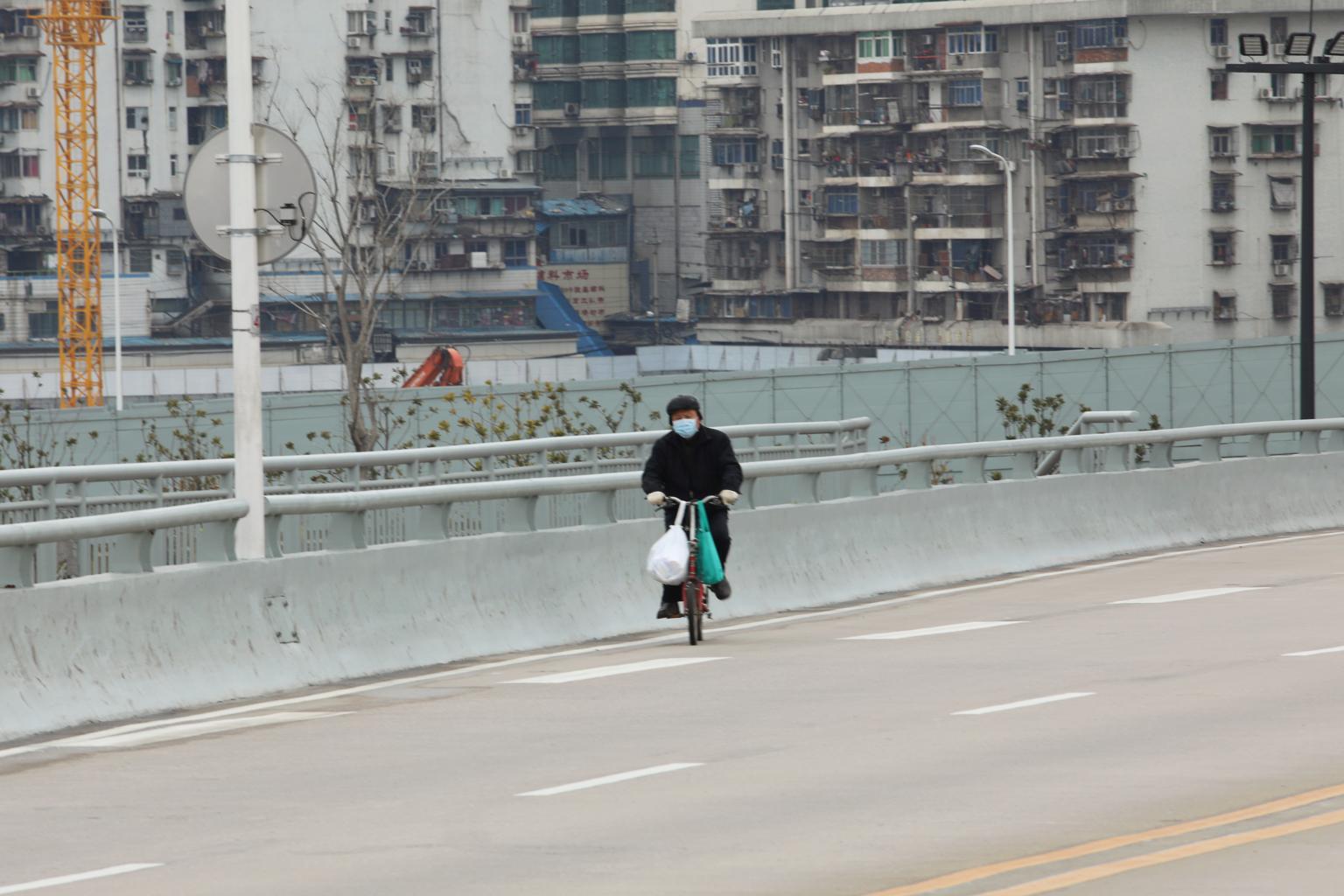57 'fever buildings' in Wuhan neighbourhood after CNY feast
Sign up now: Get ST's newsletters delivered to your inbox

A man wearing a face mask rides a bicycle past residential buildings in Wuhan, China, on Feb 7, 2020.
PHOTO: REUTERS
Follow topic:
WUHAN • A neighbourhood in Wuhan, the central Chinese city where a new coronavirus first broke out, reported at least 10 cases of infection after the local government allowed 40,000 families to gather and share their home-cooked food in a Chinese New Year banquet last month, even as the bug crept across the city.
Many residents of Hubei province's Baibuting community, which covers an area of 4 sq km with a population of 130,000, came down with fever after the annual event on Jan 18, prompting the local authorities to label 57 of its residential buildings as "fever buildings", Caixin reported.
Residents in these buildings - each housing 14 units - told Caixin Global on Tuesday that they were not advised by officials on what precautions to take even after the entrance of their apartment blocks were pasted with red paper bearing the words "fever building".
"Being listed a 'fever building' does not affect our lives. We don't really get out of the house now. Occasionally, we go downstairs to buy things, and no one controls us," said a resident.
According to the Chinese language Economic Observer, there were at least 10 cases of infection identified as of Tuesday.
Ms Liu Wei, 28, who stays alone in Baibuting, told BBC's Chinese news site on Wednesday that she has not stepped out of her apartment for the past two weeks after reading on Weibo, China's equivalent of Twitter, about the situation.
"No one leaves the house unless it is necessary. One by one, people around us have been diagnosed with the virus, so everyone is pretty freaked out," said Ms Liu. But she would still see elderly people chatting and using the exercise equipment at the foot of her block daily.
The first cases of the virus were detected in Wuhan when workers at the Huanan Wholesale Seafood Market that sold seafood, animals and birds fell ill with a mysterious pneumonia.
On Dec 31 last year, China reported the string of cases for the first time to the World Health Organisation, 23 days after the first patient sought medical attention on Dec 8. The following day, the seafood market was shut down.
In a Jan 21 interview with Chinese broadcaster CCTV, Wuhan Mayor Zhou Xianwang argued that the annual event was given the green light this year despite the risks involved as the decision was made "based on the judgment that human-to-human transmission was limited".
On the day the interview was aired, China confirmed 291 cases of infection, including 270 in Hubei. Mr Zhou also revealed that six Wuhan residents had died after catching the virus.
Two days later, the city of 11 million was locked down in an effort to quarantine the epicentre.
Mr Zhou later took responsibility for the delay in reporting the scale of the epidemic, but said he was hampered by the national law on infectious diseases. That law allows provincial governments to declare an epidemic only after receiving central government approval.
"After I receive information, I can release it only when I am authorised," he said.
SEE OPINION

